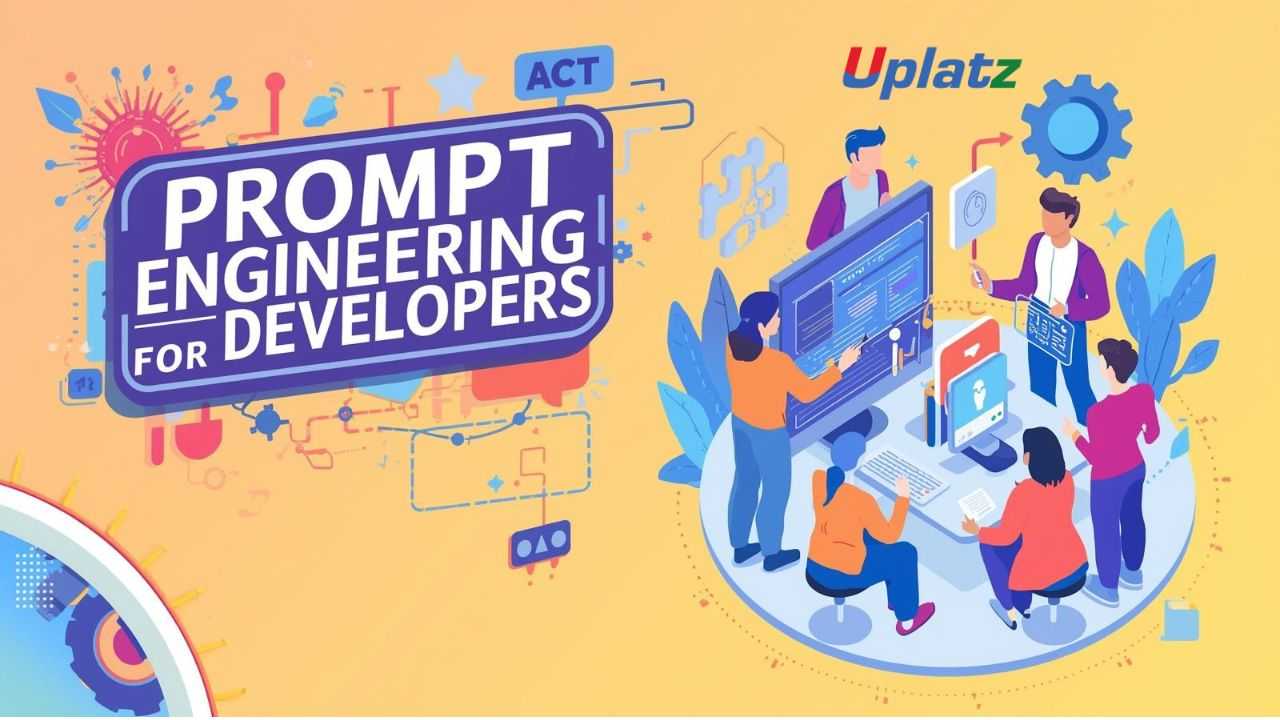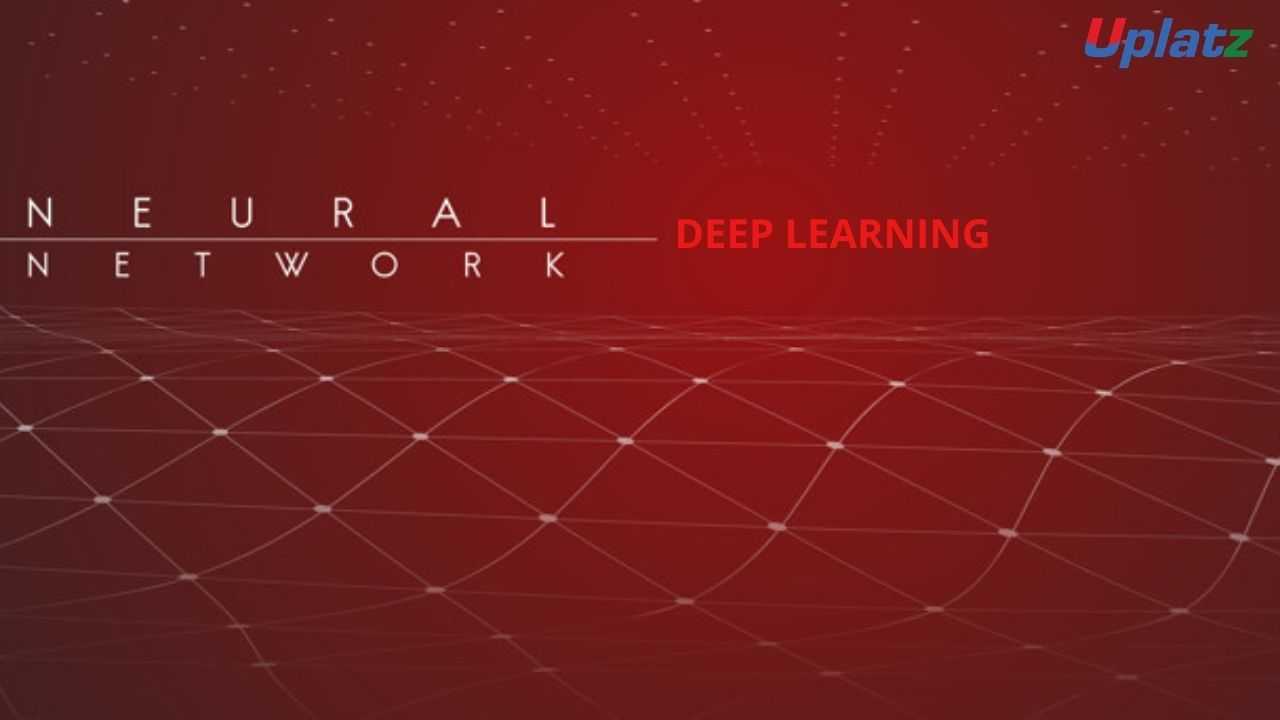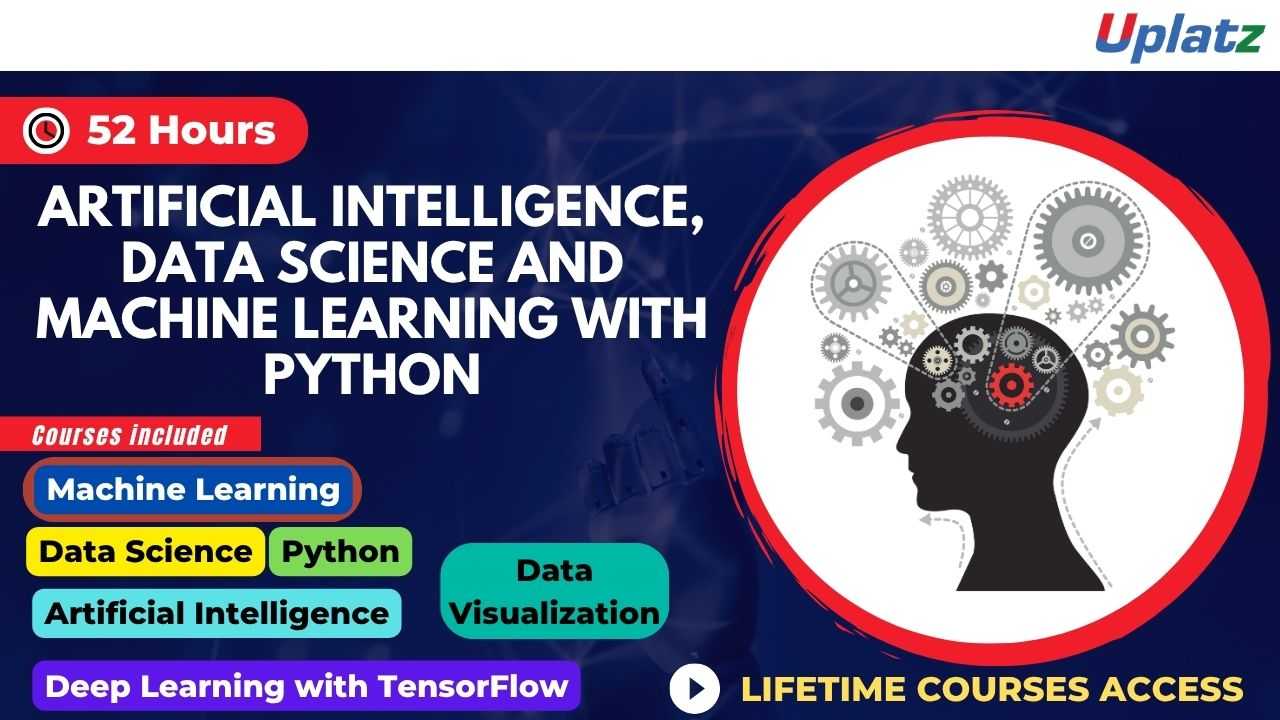Prompt Engineering for Developers
Learn to design, optimize, and automate prompts that unlock the full power of large language models (LLMs). Price Match Guarantee
Full Lifetime Access
Access on any Device
Technical Support
Secure Checkout
Course Completion Certificate
Price Match Guarantee
Full Lifetime Access
Access on any Device
Technical Support
Secure Checkout
Course Completion Certificate
 92% Started a new career
BUY THIS COURSE (
92% Started a new career
BUY THIS COURSE (GBP 12 GBP 29 )-
 81% Got a pay increase and promotion
81% Got a pay increase and promotion
Students also bought -
-

- Project on Data Visualization with R
- 2 Hours
- GBP 12
- 232 Learners
-

- Deep Learning Foundation
- 10 Hours
- GBP 12
- 1061 Learners
-

- Artificial Intelligence, Data Science, and Machine Learning with Python
- 52 Hours
- GBP 12
- 5867 Learners

Prompt Engineering for Developers is a cutting-edge course designed to help developers, engineers, and AI professionals understand how to effectively communicate with Large Language Models (LLMs) such as GPT, Claude, Gemini, Mistral, and Llama. As LLMs continue to redefine how humans interact with technology, the ability to craft precise, context-aware prompts has become an essential technical skill.
This comprehensive course explores the principles, methods, and strategies of prompt engineering, teaching you how to design inputs that lead to accurate, consistent, and reliable AI outputs. By combining theoretical insight with hands-on implementation, you’ll gain a deep understanding of how to shape, test, and deploy prompts in real-world AI applications.
Learners will progress from foundational concepts to advanced techniques such as role-based prompting, chain-of-thought reasoning, few-shot and zero-shot prompting, API integration, and automated prompt optimization. You’ll also explore prompt templating, context management, and safety alignment, ensuring that your interactions with LLMs are ethical, scalable, and production-ready.
By the end of the course, you’ll be able to design, build, and deploy prompt-driven systems that bridge human creativity with machine intelligence.
What is Prompt Engineering?
Prompt Engineering is the process of designing and refining text-based inputs (prompts) that guide a language model’s behaviour and outputs. Just as a query shapes a search result, a well-crafted prompt determines how an LLM interprets intent, retrieves knowledge, and generates responses.
In simple terms, prompt engineering is how humans “program” large language models — not through traditional code, but through language logic. A prompt can instruct, question, or simulate context, effectively turning natural language into a new interface for computation and reasoning.
A good prompt tells the model what to do, how to do it, and in what context. For example:
-
Instead of saying “Explain photosynthesis,” an optimized prompt might be:
“You are a biology tutor explaining photosynthesis to 12-year-olds using simple examples and analogies.”
The result? The LLM provides a more accurate, audience-specific, and pedagogically effective answer.
How Do Large Language Models Work with Prompts?
LLMs are trained on massive datasets containing billions of words from books, articles, code repositories, and conversations. They learn to predict the next token in a sequence — meaning they generate responses based on probabilities shaped by patterns in data.
However, the prompt defines the context. When you write an instruction, question, or dialogue, the LLM interprets it through pattern recognition and context weighting.
Prompt engineering leverages this mechanism to:
-
Frame problems clearly,
-
Control tone, depth, and perspective,
-
Constrain the model to a desired format, and
-
Elicit reasoning, creativity, or structured data outputs.
This makes prompting a core developer skill in any system that uses LLM APIs or integrates natural language capabilities — from chatbots and virtual assistants to analytics dashboards, research tools, and AI agents.
Why Learn Prompt Engineering?
The emergence of generative AI has shifted the way software systems are built. From ChatGPT and Claude to Google Gemini and Anthropic models, every modern platform depends on prompt design to extract meaningful, safe, and actionable responses.
Learning prompt engineering empowers developers to:
-
Enhance Accuracy and Relevance – Generate responses that are precise, factual, and domain-specific.
-
Boost Creativity and Efficiency – Design prompts that inspire ideation, writing, coding, and summarization.
-
Automate Reasoning Workflows – Use multi-step prompts to perform reasoning, problem-solving, and decision-making.
-
Integrate AI Seamlessly – Embed LLM capabilities into applications, chatbots, and enterprise systems through APIs.
-
Ensure Ethical and Safe AI Use – Apply guardrails, bias mitigation, and alignment techniques to maintain integrity.
As LLMs become embedded in every industry — from software engineering to education, healthcare, finance, marketing, and data science — skilled prompt engineers are in high demand. Mastering prompt engineering is like learning the “new programming language” of AI.
How Prompt Engineering is Used in the Industry
Across industries, prompt engineering powers next-generation applications such as:
-
Customer Support Bots: Designing context-sensitive prompts to ensure empathetic and consistent responses.
-
Code Generation: Using structured prompts for debugging, code translation, or algorithm generation with tools like Copilot or GPT-4.
-
Education and Training: Creating adaptive tutoring systems that personalize feedback to each learner.
-
Research and Data Analysis: Extracting insights, summarizing papers, and generating reports from large text corpora.
-
Marketing and Content Creation: Automating ideation, SEO writing, and creative copy generation.
-
Enterprise Automation: Integrating prompt-based agents in CRM, HR, or analytics systems.
By understanding prompt patterns, developers can optimise model performance and reduce costs associated with repeated API calls or manual correction of AI outputs.
Key Topics Covered
This Uplatz course is structured to give you a progressive learning journey through:
-
Fundamentals of Large Language Models and Natural Language Processing.
-
Introduction to Prompt Design – framing, structure, and clarity.
-
Role-based prompting and persona-driven context management.
-
Few-shot, one-shot, and zero-shot prompting methods.
-
Chain-of-thought (CoT) prompting for reasoning and logic.
-
Advanced techniques: self-consistency, tree-of-thought, and reflection prompting.
-
Building prompt libraries and reusable templates.
-
Prompt automation with APIs and SDKs (OpenAI, Anthropic, Google, etc.).
-
Ethical AI and bias mitigation in prompt design.
-
Testing, evaluating, and deploying prompt-based workflows in real-world applications.
Each module combines conceptual understanding with practical exercises to help you confidently design and deploy prompt-driven solutions.
What You Will Gain
By completing this course, you will:
-
Understand how LLMs interpret and respond to different prompt structures.
-
Learn structured prompting techniques to improve response quality.
-
Develop advanced prompt templates for reasoning, summarization, and creativity.
-
Integrate LLMs into real-world systems through APIs and SDKs.
-
Build prompt pipelines for enterprise-scale automation.
-
Apply best practices for security, safety, and ethical design.
-
Create end-to-end prompt-driven applications in the capstone project.
Hands-on Projects include:
-
Building a multi-step reasoning chatbot using chain-of-thought prompting.
-
Creating a prompt-based content generation tool for education or marketing.
-
Designing a data extraction assistant that interacts with structured databases via LLM prompts.
Who Should Enrol
This course is ideal for:
-
Developers & Software Engineers building AI-powered applications.
-
AI & ML Practitioners fine-tuning model performance through prompt design.
-
Data Scientists integrating natural language interaction into analytical tools.
-
Product Managers & Innovators shaping AI-driven user experiences.
-
Students & Researchers studying human–AI interaction and computational linguistics.
No advanced machine learning background is required — curiosity, creativity, and basic programming familiarity are enough to get started.
Why Choose Uplatz for Prompt Engineering Training
Uplatz courses are known for clarity, practicality, and depth. This Prompt Engineering for Developers course combines theory with hands-on labs, real examples, and project-based learning. You will gain exposure to industry-standard LLM APIs, real-time testing environments, and professional use cases that prepare you for the evolving world of AI development.
By the end of the program, you’ll not only know how to write effective prompts — you’ll think like a prompt engineer, capable of shaping intelligent, ethical, and impactful AI interactions.
Final Thoughts
Prompt engineering represents the bridge between human intent and machine intelligence. As AI becomes the interface for most digital systems, the ability to craft meaningful and structured prompts will define the next generation of software innovation.
This Uplatz course equips you with both the mindset and the tools to build intelligent, trustworthy, and adaptive AI systems powered by large language models. Whether your goal is to improve productivity, build AI products, or stay ahead of the curve in the fast-moving AI industry — this course will give you the confidence and capability to lead in the era of intelligent automation.
By the end of this course, learners will be able to:
- Understand how LLMs process and interpret prompts.
- Apply key prompting techniques: zero-shot, few-shot, and chain-of-thought.
- Build role-based and context-aware prompt frameworks.
- Design prompt templates and reusable structures for AI automation.
- Evaluate and refine prompt performance using metrics and human feedback.
- Integrate prompts into applications through APIs (e.g., OpenAI, Anthropic, Cohere).
- Implement grounding and retrieval-augmented generation (RAG) techniques.
- Apply ethical prompting and bias mitigation practices.
- Automate prompt tuning using scripting or fine-tuning frameworks.
- Develop complete AI-assisted applications with modular prompting architectures.
Course Syllabus
Module 1: Introduction to Prompt Engineering
Understanding LLMs, tokens, embeddings, and the prompt-response mechanism.
Module 2: Fundamentals of Prompt Design
How to structure, phrase, and refine prompts for clarity and precision.
Module 3: Zero-Shot, One-Shot, and Few-Shot Prompting
Using examples and context to improve LLM reasoning and accuracy.
Module 4: Chain-of-Thought and Step-by-Step Reasoning
Guiding models through logical, multi-step problem-solving processes.
Module 5: Role Prompting and Instruction Design
Defining model personas and roles for improved contextual responses.
Module 6: Context Management and Memory in LLMs
Maintaining continuity across sessions and managing conversation history.
Module 7: Advanced Prompt Optimization
Using parameter tuning, stop sequences, and temperature adjustments.
Module 8: Integrating Prompts with APIs and Applications
Building intelligent apps using Python SDKs and RESTful APIs.
Module 9: Retrieval-Augmented Generation (RAG)
Combining vector databases and document retrieval with prompt workflows.
Module 10: Evaluation and Testing of Prompts
Quantitative and qualitative methods for measuring prompt performance.
Module 11: Ethical and Responsible Prompting
Handling bias, privacy, and fairness in generative AI systems.
Module 12: Capstone Project – End-to-End Prompt-Driven Application
Design and deploy a complete LLM-based solution using advanced prompting techniques, including structured instructions, context retrieval, and automation logic.
Upon successful completion, learners will receive a Certificate of Mastery in Prompt Engineering for Developers from Uplatz.
This certification validates your ability to design, optimize, and implement effective prompts for LLM-based applications. It demonstrates your technical proficiency in:
- Prompt architecture and design thinking for AI systems.
- Integrating LLMs into production applications via APIs.
- Applying best practices for reliability, safety, and scalability.
This credential confirms your readiness to excel as a Prompt Engineer, AI Application Developer, or LLM Integration Specialist, capable of building next-generation intelligent systems.
Prompt engineering expertise is increasingly in demand across industries such as AI product design, automation, customer support, education, and software development.
Career roles include:
- Prompt Engineer
- LLM Application Developer
- AI Interaction Designer
- NLP Engineer
- AI Product Manager
- Chatbot Developer
Professionals with strong prompt engineering skills can design intelligent, human-like digital experiences — a core competency for the future of generative AI systems.
- What is prompt engineering?
The process of designing inputs to guide large language models toward accurate, context-relevant, and reliable outputs. - What are zero-shot, one-shot, and few-shot prompts?
Different prompting methods that vary in the number of examples given to guide the model’s behavior. - What is chain-of-thought prompting?
A technique where the model is instructed to reason step-by-step, improving accuracy on complex tasks. - How do role prompts improve model responses?
They assign a specific persona or context to the model, guiding it to respond in a defined tone or expertise level. - What are key parameters that affect LLM responses?
Temperature, max tokens, top-p, and frequency/presence penalties. - What is RAG (Retrieval-Augmented Generation)?
A method that enhances LLM outputs by retrieving relevant external data before generating responses. - How can developers evaluate prompt performance?
Through accuracy, consistency, human feedback, and automated benchmark tests. - How is prompt engineering applied in real-world applications?
In chatbots, content generation, summarization, coding assistants, and intelligent search. - What ethical challenges exist in prompt engineering?
Bias amplification, misinformation, and unintended model behaviors. - What are best practices for designing effective prompts?
Be clear, contextual, specific, and test iteratively; include examples when necessary and avoid ambiguity.









